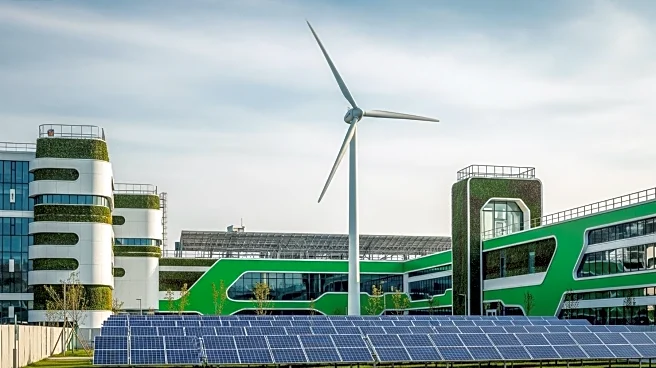What's Happening?
The national vacancy rate in shopping centers has increased to 5.8% in the second quarter of 2025, according to a report from Cushman & Wakefield. This rise in vacancies is attributed to the closure of chain stores and mounting cost pressures on tenants. As a result, small businesses, including health practitioners, yoga instructors, and artists, are finding it easier to secure prime commercial spaces that were previously out of reach. Kimberly Blair, a wellness practitioner in San Diego, successfully negotiated favorable lease terms for her new storefront, highlighting the opportunities available for small businesses. Experts note that these opportunities vary by geography, with some areas experiencing a reset in retail corridors, allowing independent retailers and service-based businesses to move into spaces once occupied by national brands.
Why It's Important?
The increase in mall vacancies presents a significant opportunity for small businesses to expand into commercial properties that were previously unaffordable. This shift could lead to a revitalization of local economies, as small businesses bring unique offerings and a sense of community to shopping centers. The trend also reflects a broader recalibration of the retail market, where landlords are more open to flexible lease terms and innovative business models. This environment can be a lifeline for entrepreneurs navigating tight margins and competitive markets, potentially leading to increased local regeneration and economic growth.
What's Next?
As vacancies continue to rise, landlords and local councils may collaborate to offer short-term leases, pop-up programs, or revenue-sharing arrangements to keep units occupied. This could further enhance the opportunities for small businesses to test physical presence without overextending capital. Additionally, the trend of chain store closures is expected to persist, potentially opening more spaces for local businesses. However, landlords may still prefer tenants who can offer long-term stability, which could influence the types of businesses that succeed in securing these spaces.
Beyond the Headlines
The shift in retail real estate dynamics could lead to a cultural transformation in shopping centers, where local businesses create unique experiences that reflect the community. This change may challenge traditional retail models and encourage innovation in how commercial spaces are utilized. Furthermore, the increased presence of small businesses in malls could alter consumer expectations, prioritizing personalized and community-focused shopping experiences over standardized chain offerings.










